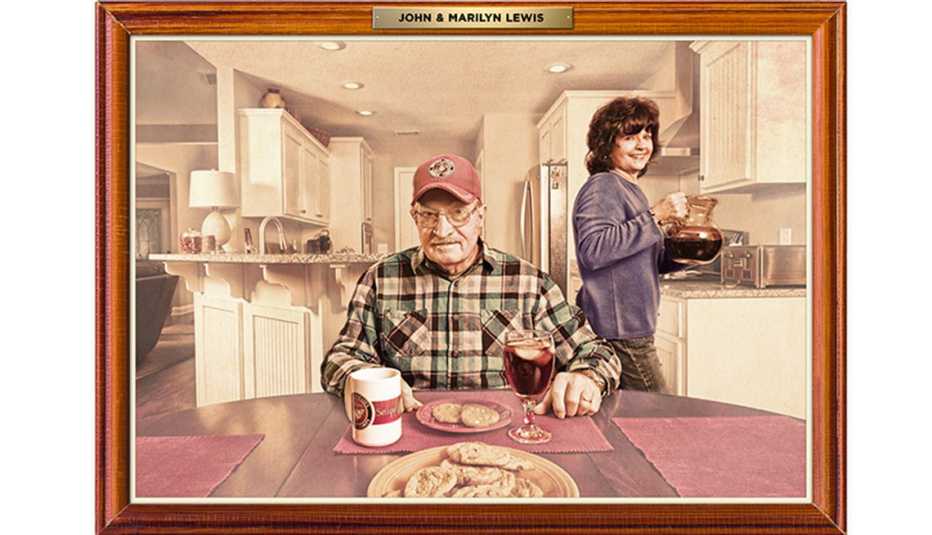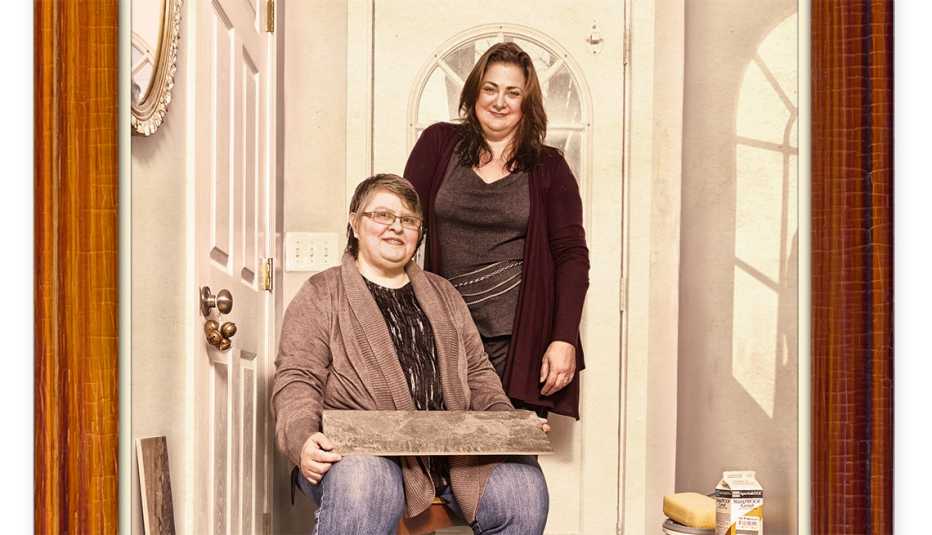Staying Fit


Martha and Byron Grush
The Dream: A farmhouse for all seasons where grandkids can visit
The Move: Santa Fe, N.M., to Delavan, Wis.
The Cost: $172,000 for 1,650 square feet and a garden
"I've always wanted to live in a house like this," says Martha Grush, 71, of the 112-year-old, two-story farmhouse she shares with her husband, Byron, also 71. When the birth of their first grandchild spurred their return to the Midwest a few years ago, they naturally gravitated to the small Wisconsin lake towns north of Chicago and the area's classic wood-frame homes.


AARP Membership— $12 for your first year when you sign up for Automatic Renewal
Get instant access to members-only products and hundreds of discounts, a free second membership, and a subscription to AARP the Magazine.
The couple ultimately settled on Delavan after falling for what Byron calls its "old-timey" feel, including its 19th-century downtown, friendly citizens and quirky history (among other claims to fame, Delavan is the birthplace of the Barnum & Bailey Circus).
The Grushes looked at dozens of houses, both online and in person, but what clinched the deal was the huge beds of perennials planted by a previous owner. "This is the first time I've had this kind of garden," says Martha. Inside, too, the aesthetic is light, comfortable and full of art — lots and lots of art.
Although Wisconsin winters can be brutal, the grandkids love sledding, and affable neighbors often perform, unasked, sidewalk-clearing duties. And the Grushes have always treasured the variety of four seasons. "Even in Santa Fe, there were distinct seasons," says Martha. "They're different here but every bit as beautiful."
Kathy and Rob Clapper
The Dream: Mountain living, lower costs and room for Mom
The Move: South Windsor, Conn., to Montrose, Colo.
The Cost: $239,000 for a new, 2,500-square-foot house
Rob Clapper, a transplant from Connecticut, may be retired, but he's tireless in singing the praises of the Colorado town he and his wife, Kathy, 60, moved to in September 2013 with Kathy's mother, Mary Myles, 87. Without prompting, Rob, 68, a former landscape architect for Connecticut's Department of Energy and Environmental Protection, will tick off a long list of Montrose's virtues.
Topping that list is the town's cost of living, which is dramatically lower than back in the East. The Clappers bought their new four-bedroom, two-bathroom house for just $239,000 (a comparable new home could be 50 percent more expensive in South Windsor). Also cheaper in Montrose: property and income taxes, heating and cooling costs, and car and homeowners insurance.
Then there's the critical fact that the Clappers are pleased with local health care — essential for Myles, who has struggled with health problems.



































































More on Money
A Small-Town Retirement Dream
Trading the bustle of L.A. for a lively little locale
The ‘Ultimate Question’ for Retirees Who Relocate
Buy a house in your new community or rent instead?Will These House Hunters Find Their Dream Homes?
City or country? Downsize or expand? Follow 10 people through bidding wars and tough choices on the road to their new home